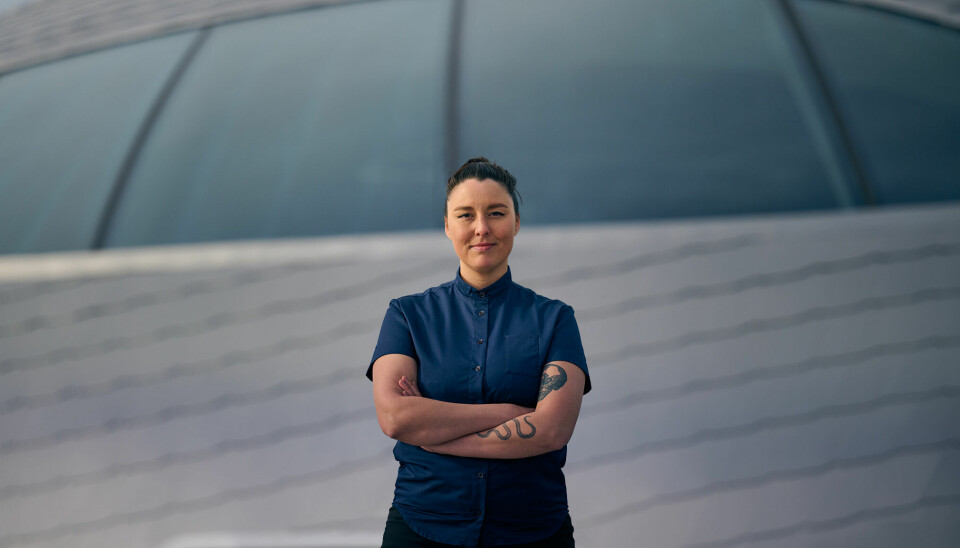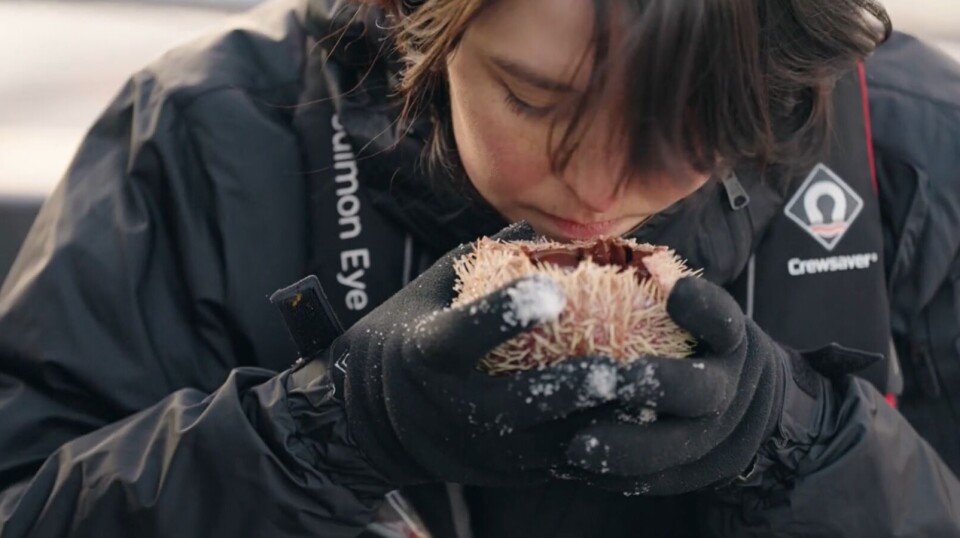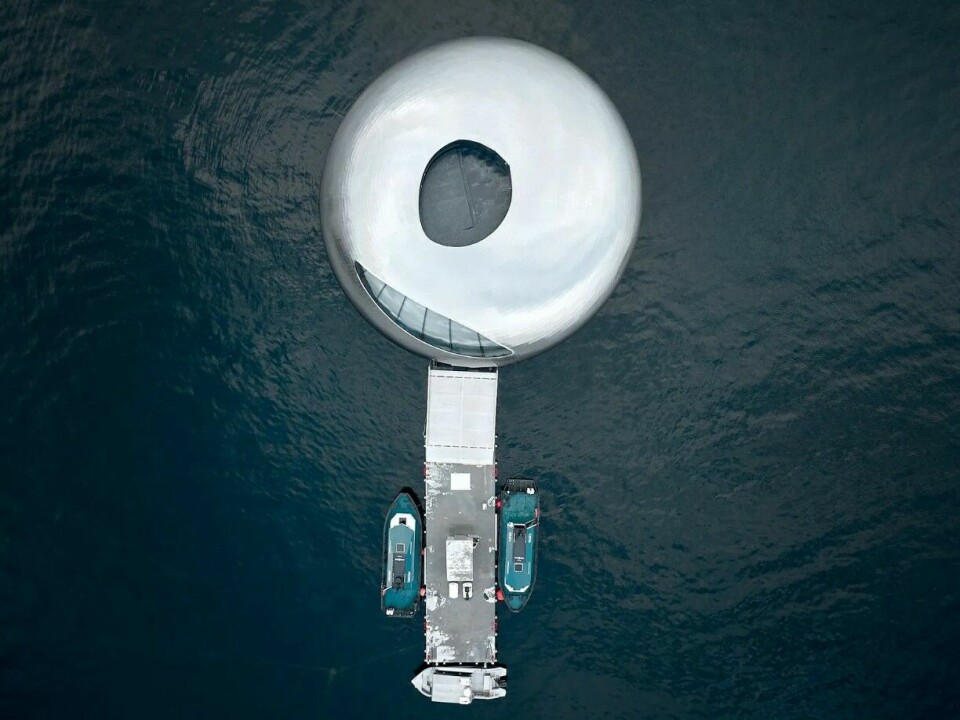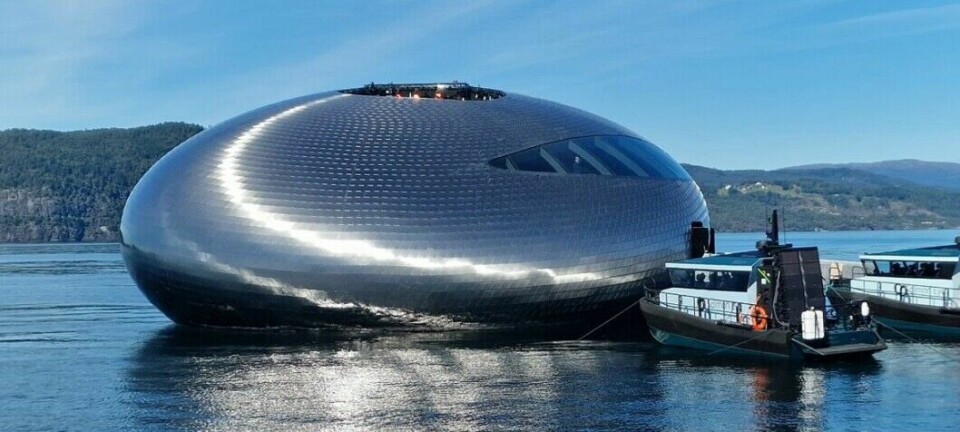
Salmon Eye puts sustainability on a plate
Restaurant at floating experience centre will serve 18-course meal showcasing fish farmer’s mission to tackle food supply challenges
Innovative salmon farmer Eide Fjordbruk is to open a sustainability-focused restaurant at its visually stunning Salmon Eye experience centre in Norway’s Hardangerfjord.
The fine dining restaurant, named Iris because it is in the middle of the Salmon Eye, will be run by head chef Anika Madsen, who Eide Fjordbruk says is known for her passion for discovering new ingredients from the ocean, and her commitment to sustainability.
Until recently she held the position of head chef at the lauded Fasangården restaurant in Copenhagen.
“It has always been close to my heart to lift the less known sustainable ingredients into the spotlight. If I discover an ingredient that will lead to a greener future, I am not afraid to push boundaries. But to convince people to love it, it needs to be truly delicious,” said Madsen in a press release.
A universe below the surface
The chef has swapped the Danish capital for life on the tiny island of Sniltsveitøy, enabling her to get as close as possible to the bounty of the sea.

“Here on the Norwegian coast, I can explore a whole universe below the surface that I could only dream of in Copenhagen. This region offers some of the cleanest and most exciting seafood produce in the world,” said Madsen.
“I am especially looking forward to working with ingredients like the invasive red sea urchin and all kinds of local seaweed and presenting them as a part of a fine dining experience. There is also a plethora of regional products like game meat, sheep’s milk, and ciders that will have natural spots on the menu.”
Sondre Eide is chief executive of Eide Fjordbruk, the world’s first salmon producer certified under the CarbonNeutral Protocol run by Climate Impact Partners.
Food memories to inspire
“To feed the future we need to tap into the vast potential of the oceans, not only when it comes to develop technologies for more sustainable food production, but also when it comes to creating the best food memories that inspires people to explore the possibilities below the surface,” said Eide.
“Iris is all about our vision ‘Setting the standard for the future of aquaculture’. To make this happen, we need the best people within their respective fields, whether it be on the farms or in the kitchen. It is inspiring to meet people like Anika that shares the same passion for always improving.”
Iris, which will open in late spring and can accommodate 24 diners, is located inside the Salmon Eye in the Hardanger fjord, just outside the town of Rosendal. Diners will be ferried to the restaurant by electric boats, and will then be served an 18-course dinner in a dining room with a panorama view over the fjord, glaciers, and mountains.

A floating art installation
The Salmon Eye, which was inaugurated last year, is one of the world’s largest enterable floating art installations, with a weight of 1,256 tonnes, a diameter of 25 metres, and an area of 1,000.6 m² divided over four levels, one of which is underwater.
“Salmon Eye’s mission is to take on our biggest shared challenges, such as climate change and sustainable food production,” said the centre’s manager, Sebastian Torjusen.
“These are challenges that we can only overcome if all of us contribute. Governments must facilitate, so that businesses are enabled to act, and consumers are empowered to make the right choices. In the process, it is important not to forget that we’re talking about food – with a rich experiential and cultural dimension.
“Iris will be on the front line, taking on these great challenges and showcasing our mission on a plate.”
Watch a promotional video about the restaurant here.























































